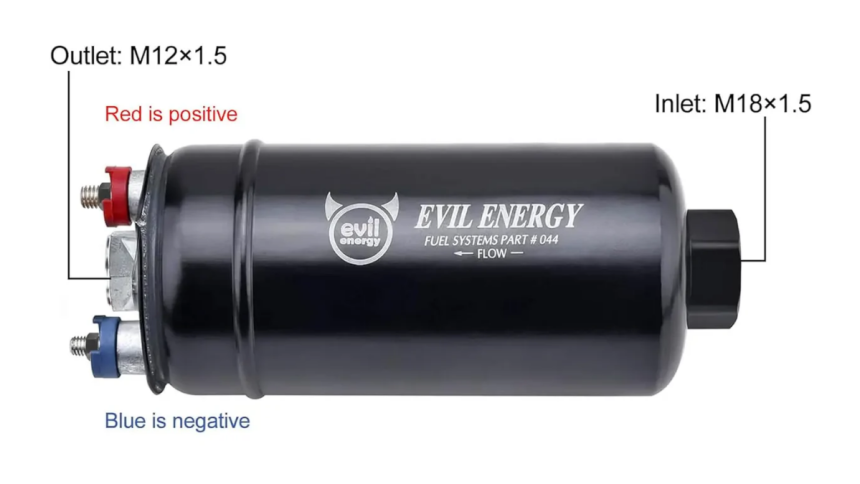Maintaining a vehicle’s optimal performance and longevity requires attention to several critical components. Two essential elements that significantly impact a vehicle’s efficiency and reliability are coolers for transmissions and inline electric fuel pumps. This comprehensive guide delves into the details of these components, their benefits, installation tips, and best practices for selection.
Understanding Transmission Coolers
What is a Transmission Cooler?
A transmission cooler is an additional component designed to lower the temperature of a vehicle’s transmission fluid. Transmission fluid is essential for lubricating moving parts within the transmission and ensuring smooth gear shifts. However, the fluid can become excessively hot during operation, leading to diminished performance and potential damage.
Benefits of Installing a Transmission Cooler
Extended Transmission Life: A transmission cooler helps prevent overheating and reduces wear and tear on transmission components by keeping the transmission fluid at a lower temperature.
Improved Performance: Lower temperatures ensure the transmission operates more efficiently, providing smoother gear shifts and better overall performance.
Enhanced Towing Capability: Vehicles that frequently tow heavy loads benefit significantly from a transmission cooler, as towing can generate additional heat.
Preventative Maintenance: Installing a transmission cooler can help avoid costly repairs by maintaining optimal fluid temperatures and preventing overheating.
Types of Transmission Coolers
Tube and Fin Coolers: These are the most common type, featuring a series of tubes connected by fins to dissipate heat.
Plate and Fin coolers are more efficient than tube and fin coolers. They offer a compact design with plates and fins to maximize cooling capacity.
Stacked Plate Coolers: The most efficient type, stacked plate coolers have a larger surface area for heat dissipation, making them ideal for high-performance applications.
Choosing the Right Transmission Cooler
Vehicle Compatibility: Ensure the cooler matches your vehicle’s make and model.
Cooling Capacity: Select a cooler with adequate capacity for your vehicle’s needs, especially if you engage in heavy towing or high-performance driving.
Size and Fit: Consider the cooler’s physical size and ensure it will fit in the designated area within your vehicle’s engine bay.
Quality and Durability: Opt for coolers made from high-quality materials to ensure longevity and effective performance.
Installation Tips for Transmission Coolers
- Preparation: Gather all necessary tools and components. Review the installation instructions thoroughly before beginning.
- Mounting Location: Choose a location with good airflow, typically in front of the radiator or AC condenser.
- Secure Mounting: Ensure the cooler is securely mounted to avoid vibrations and potential damage.
- Proper Connections: The provided hoses and fittings connect the cooler to the transmission lines. Ensure all connections are tight and leak-free.
- Check Fluid Levels: After installation, check the transmission fluid levels and top up if necessary.
- Test for Leaks: Start the engine and check for leaks around the connections and fittings.
Understanding Inline Electric Fuel Pumps
What is an Inline Electric Fuel Pump?
An inline electric fuel pump is an aftermarket component that helps deliver fuel from the fuel tank to the engine. Unlike mechanical fuel pumps, driven by the engine’s camshaft or crankshaft, electric fuel pumps are powered by the vehicle’s electrical system, providing a consistent and reliable fuel supply.
Benefits of Installing an Inline Electric Fuel Pump
Consistent Fuel Delivery: Electric fuel pumps provide a steady and consistent fuel flow to the engine, ensuring optimal performance.
Increased Fuel Pressure: They can deliver higher fuel pressure than mechanical pumps, which benefits high-performance engines.
Reliability: Electric fuel pumps are generally more reliable and require less maintenance than mechanical pumps.
Compatibility with Modern Engines: Modern fuel-injected engines benefit significantly from the consistent pressure of electric fuel pumps.
Types of Inline Electric Fuel Pumps
High-Pressure Fuel Pumps: Designed for fuel-injected engines, these pumps deliver high pressure to ensure optimal injector performance.
Low-Pressure Fuel Pumps: Suitable for carbureted engines, these pumps provide the necessary pressure without overwhelming the carburetor.
Universal Fuel Pumps: These pumps can be adapted for various vehicle types and fuel delivery systems.
Choosing the Right Inline Electric Fuel Pump
Vehicle Specifications: Ensure the pump matches your engine type and fuel delivery system.
Flow Rate: Select a pump with the appropriate flow rate for your engine’s fuel consumption needs.
Pressure Rating: Choose a pump that delivers the correct pressure for your engine, whether fuel-injected or carbureted.
Quality and Brand: Opt for pumps from reputable manufacturers known for quality and reliability.
Installation Tips for Inline Electric Fuel Pumps
- Safety First: Work in a well-ventilated area and avoid open flames or sparks when dealing with fuel.
- Locate the Pump: Install the pump as close to the fuel tank as possible to ensure efficient fuel delivery.
- Secure Mounting: Use the provided mounting hardware to secure the pump, avoiding excessive vibrations.
- Proper Wiring: Connect the pump to the vehicle’s electrical system, ensuring all connections are secure and properly insulated.
- Fuel Line Connections: Use high-quality fuel lines and clamps to connect the pump to the fuel tank and engine. Ensure all connections are tight and leak-free.
- Prime the Pump: Before starting the engine, prime the pump by turning the ignition on and off a few times to build up fuel pressure.
- Check for Leaks: After installation, start the engine and check for any fuel leaks around the pump and connections.
Conclusion
Transmission coolers and inline electric fuel pumps are crucial upgrades for enhancing your vehicle’s performance and reliability. Transmission coolers help maintain optimal fluid temperatures, preventing overheating and extending the life of your transmission. Inline electric fuel pumps ensure consistent fuel delivery, improving engine performance and reliability.
When selecting and installing these components, compatibility, quality, and proper installation techniques must be considered. By following the guidelines and tips in this comprehensive guide, you can make informed decisions and achieve the best results for your vehicle.
Whether preparing for heavy towing, high-performance driving, or improving your vehicle’s efficiency and longevity, investing in a quality transmission cooler and inline electric fuel pump can make a significant difference. Always prioritize safety and consult with a professional if you are unsure about any aspect of the installation process.
Lynn Martelli is an editor at Readability. She received her MFA in Creative Writing from Antioch University and has worked as an editor for over 10 years. Lynn has edited a wide variety of books, including fiction, non-fiction, memoirs, and more. In her free time, Lynn enjoys reading, writing, and spending time with her family and friends.















